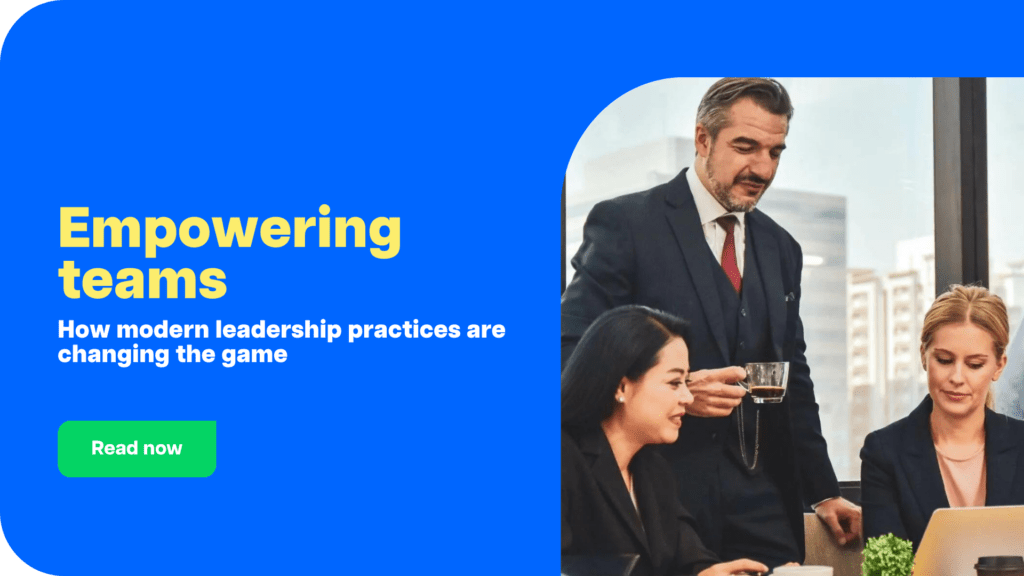Building strong leadership abilities is essential in the competitive economic world of today. Programs for developing leaders are essential for developing the kind of talents that propel a team’s performance and cultivate a culture of devotion and commitment. This article looks at how companies can design internal leadership programs that develop competent leaders and encourage dedication and loyalty from staff members.
Table of Contents
- Understanding leadership development programs
- The link between leadership development and employee loyalty
- Designing your leadership development programs
- Implementation strategies
- Measuring success and making adjustments
Understanding leadership development programs
Programs for developing leaders are organized efforts aimed at improving leadership skills inside an organization. Training sessions, mentorship opportunities, and practical projects that promote learning by doing are frequently included in these programs. The objective is to produce leaders who can successfully lead teams, propel an organization’s success, and adjust to shifting market conditions.

The link between leadership development and employee loyalty
More than merely a means of improving managerial abilities, leadership development programs play a vital role in increasing job satisfaction and fostering a devoted staff. These initiatives can have a big impact on job satisfaction, staff retention, and creating a positive, encouraging work environment.
Enhancing job satisfaction and employee retention
- Empowerment through skill enhancement: By giving staff members the tools they need to succeed, leadership training empowers them. Employee job satisfaction rises when they perceive clear career paths and feel secure in their roles. Employees are less likely to consider leaving an organization due to feeling less empowered and frustrated.
- Recognition and investment: Implementing leadership development programs signals to employees that the organization is invested in their personal and professional growth. This kind of investment is often reciprocated by loyalty. A study by LinkedIn found that companies that have high internal hiring for leadership positions (indicative of robust leadership development) see 41% longer retention of their employees.
- Career advancement opportunities: Leadership training often prepares employees for higher roles within the company, which can be a huge motivator. The opportunity for advancement not only retains talent but also attracts it. Employees are more likely to stay with an organization that they believe offers them a future.
Building a supportive and engaging work environment
- Creating role models: Trained leaders are better equipped to act as mentors and role models within an organization. They learn to manage not just projects but people, fostering a supportive atmosphere that values open communication and feedback. The work environment becomes more engaging and encouraging when employees feel their supervisors are there for them and setting a good example.
- Enhancing communication skills: Gaining proficiency in effective communication is a key element of leadership development. It takes sympathetic and effectively communicating leaders to foster a welcoming and cooperative work atmosphere. This ability promotes increased cooperation and productivity among teams while also aiding in the resolution of disputes and maintaining transparency.
- Fostering team cohesion: Skilled leaders are able to match the objectives of the team with the individual strengths and shortcomings of their subordinates. Training in leadership teaches participants how to manage dynamics that improve group cohesiveness and collaboration, as well as how to motivate teamwork and generate synergy. Teams that are cohesive are more likely to be involved, effective, and devoted.
- Cultural alignment: Leadership development courses frequently stress how important it is to fit in with the company’s culture and values. By fostering a work environment that embodies these principles, leaders who have received this training can improve employee engagement and loyalty. Workers are more likely to form a close relationship with their company if they believe that their workplace reflects their personal values.
In addition to being essential for personal development, leadership development fosters a positive workplace culture that increases worker loyalty and job satisfaction. Organizations may create a foundation of loyalty and shared success that can survive the difficulties of a quickly changing business environment by investing in leadership training. This is essentially an investment in the people and future of the organization.

Designing your leadership development programs
Developing a curriculum that is specifically designed for an organization, choosing the best candidates, incorporating contemporary technology and methodology, and assessing organizational needs are all critical steps in the creation of a successful leadership development program. It is important to develop a leadership program that both supports the organization’s goals and cultivates the qualities of true leaders.
Step 1: Assessment of needs
- Identify organizational goals: Begin by understanding the long-term goals of your organization. What leadership roles are critical for your future growth? What skills will these leaders need?
- Evaluate current leadership skills: Conduct assessments through surveys, interviews, and performance reviews to identify the current leadership capabilities and gaps within your organization. This can involve feedback from employees at all levels.
- Forecast future needs: Consider the direction your industry is heading and the challenges your organization might face. What kind of leaders will you need to navigate these challenges?
Step 2: Curriculum development
- Define core competencies: Based on the assessment, define the core competencies that your leadership program should focus on. These might include strategic thinking, emotional intelligence, decision-making, team management, and ethical leadership.
- Design learning modules: Create modules that cover the identified competencies. Each module should include theoretical learning, practical exercises, and real-life case studies to enhance understanding and application of skills.
- Continuous learning: Ensure that the curriculum allows for ongoing learning and development. This can be achieved through regular updates to the curriculum and incorporating advanced topics as participants progress.
Step 3: Selection process
- Set clear criteria: Develop clear, objective criteria for selecting participants. Criteria might include demonstrated leadership potential, performance metrics, and specific personal qualities such as adaptability and resilience.
- Inclusive selection: Make sure the selection process allows for the inclusion of diverse talent from various parts of the organization. Diversity in leadership development enriches learning and brings varied perspectives to leadership roles.
- Transparent process: Keep the selection process transparent to maintain trust and ensure all potential candidates understand how to be considered for the program.
Step 4: Integration of technology and innovative teaching methods
- Leverage technology: Use technology to enhance learning and engagement. This can include virtual reality for immersive scenario-based training, AI-driven simulations for decision-making, and online platforms for collaborative learning.
- Innovative teaching methods: Incorporate methods like flipped classrooms, where participants study materials in advance and use classroom time for discussion and practical exercises. Gamification can also be a powerful tool to make learning more engaging and interactive.
- Blended learning: Combine online digital media with traditional classroom methods. This allows flexibility for participants and helps accommodate different learning styles and schedules.
- Monitor and evaluate: Regularly review the effectiveness of the program using technology-driven data analytics. Tools like learning management systems (LMS) can track progress, engagement, and success rates of modules and help in refining the program.
Designing a leadership development program requires careful planning and a deep understanding of your organization’s current and future leadership needs. By following these structured steps, you can create a program that not only develops effective leaders but also aligns with your organizational goals and enhances overall performance.
Implementation strategies
Implementing a leadership development program effectively is crucial to its success and sustainability. Here are best practices, potential challenges, and examples from successful organizations.
Best practices for implementation
- Securing executive support: Gain the commitment and backing of top management. Leadership programs thrive when executives actively participate and advocate for their importance.
- Communicating clearly: Ensure all participants and stakeholders understand the program’s goals, benefits, and expectations. Effective communication prevents misunderstandings and promotes greater engagement.
- Integrating into company culture: Align the program with the company’s culture and values. This integration helps reinforce the relevance of the program and increases its acceptance across the organization.
- Providing resources: Allocate sufficient resources—budget, time, and tools—to support the program. Lack of resources is a common reason for program falter.
Challenges and pitfalls to avoid
- Lack of customization: Avoid a one-size-fits-all approach. Tailor the program to fit the specific needs and contexts of your organization and its employees.
- Underestimating time requirements: Don’t underestimate the time commitment required from participants and organizers. Ensure schedules are managed to minimize disruption while maintaining productivity.
- Ignoring early feedback: Be responsive to feedback from the early stages of implementation. Ignoring suggestions or concerns can lead to decreased engagement and efficacy.
Measuring success and making adjustments
Evaluating the effectiveness of leadership development programs is essential to understand their impact and refine them over time.
Tools and metrics for evaluation
- 360-degree feedback: Use comprehensive feedback mechanisms involving self-assessment, as well as feedback from peers, subordinates, and supervisors.
- Performance metrics: Track quantifiable data such as completion rates, promotion rates among participants, and performance improvements in leadership competencies.
- Engagement surveys: Regularly conduct surveys to assess the engagement and satisfaction of participants with the program.
Using feedback to improve program elements
- Continuous feedback loop: Establish mechanisms to collect and analyze feedback throughout the program. This allows for timely adjustments and keeps the program aligned with participant needs and organizational goals.
- Pilot groups: Implement the program’s initial phases with pilot groups. This strategy helps identify strengths and weaknesses before a full rollout.
The importance of continuous improvement
- Adaptability: Programs for developing leaders must alter as a result of feedback, shifting market conditions, and shifting business strategies. This flexibility guarantees the program’s continued relevance and efficacy.
- Innovative approaches: To maintain an engaging and current curriculum, regularly investigate new teaching strategies, educational resources, and technological advancements.
- Cultural alignment: Constantly make sure that the program is in line with any changes that may occur in the company’s values and culture over time.
The success of leadership development programs is largely dependent on their efficient execution and ongoing assessment. Through the use of best practices, proactive problem-solving, and accurate assessment metrics, businesses may greatly increase the efficacy of their leadership development initiatives and cultivate an environment that values ongoing development and advancement.
Conclusion
Putting money into strong leadership development programs has many advantages; these include raising employee retention and work satisfaction as well as encouraging a culture of loyalty and proactive development inside a company. These programs give leaders the tools they need to lead with effectiveness, motivate their staff, and closely match their objectives with those of the company, all of which contribute to a stronger corporate culture overall.
Therefore, firms should see leadership development as a strategic asset that can greatly increase their competitive edge and produce a staff that is resilient and prepared for the future, rather than just as an operational requirement. Any company hoping to prosper in the fast-paced market of today must adopt this strategic approach to leadership development.

Andy is a technology & marketing leader who has delivered award-winning and world-first experiences.


